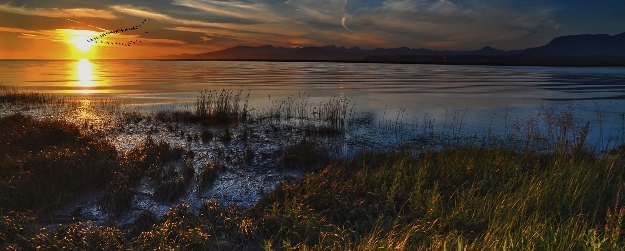Provided by Mossy Oak Properties

Government easement programs are designed to take land out of production for a greater purpose. The U.S. Department of Agriculture regulates this process and rewards landowners who choose to participate in easement programs.
Two types of easements in particular, the Conservation Reserve Program and the Wetlands Reserve Program, have made a great impact on the protection and preservation of vital land. Instead of using certain land for private profit or use, such as row crop farming, landowners essentially apportion a section of their land and offer it up for predetermined use in exchange for financial support.
Conservation Reserve Program
In the case of the CRP program, landowners receive payment from the government to plant species that promote the quality of the land in the area, according to the USDA. These contracts typically extend 10 or 15 years. Eligible land is usually property that is susceptible to environmental effects like floods and soil erosion, for which the government then repurposes. Farmers then plant items that encourage wildlife production, such as grasslands while improving water quality.
Mike Germann, broker and owner of Mossy Oak Properties of Montana-Gallatin in Bozeman, Montana, noted landowners should think hard about whether to enroll in the easement program.
"The CRP program provides income on the land in the program, which is nice," said Germann. "However, it also takes that same land out of production."
Weighing the benefits of receiving payments with the detriments of sacrificing a part of an owner's property is crucial.
The program helps offset any financial costs associated with the easement with annual rental payments. In addition, the USDA indicated landowners must hold the deed for at least one year before enrolling.
Wetlands Reserve Program
The WRP program is technically no longer active, as it was not renewed in the most recent Farm Bill in 2014, according to the USDA. However, it may reappear once again depending on the actions of future legislators.
During its time, the WRP program benefited landowners who held property predominantly in alluvial areas, such as river bottoms or marshes. With voluntary enrollment, the cost to sign up was covered by the government while owners still maintained water rights, title and control of access to the preserved land. Landowners also received payments to make up for the devaluation of the land after the easement was enacted.
The goal was to protect wetland regions and the wildlife that inhabit them. By removing the land from production and potential degradation, the government established long-term conservation goals typically in the form of 30-year easements.
Understanding the value of land
By taking land out of production, the property is inherently less valuable to buyers because there are fewer acres to farm or use for other cash-flow activities. As such, landowners should be aware of how these easements affect their land. This is particularly true when it comes to putting the land on the market, Germann stated.
"Once the decision is made to enter a particular program, it is kind of hard to undo," said Germann. "[Government programs] will generally affect marketability for a particular property if the owner decides to sell in the future."
If an owner originally bought land to grow crops of his or her choice, then an easement may not be the best option, despite the tax benefits.
"These programs can be a nice tool for some income or tax benefit," noted Germann. "I think they work better for some properties and individuals better than others. The owner needs to identify if theirs is one of those properties that is a good fit. Just remember the long-term consequences."
Additionally, by signing a contract that lasts several decades, owners may not be prepared to face fluctuating economic conditions during that time span. Because the land is out of production and is less attractive to buyers, owners may have trouble selling for profit during hard times.
If commodity prices rise, and there is little equity or value in the land, owners may have few financial resources to tap into to help deal with new economic realities. However, for those who are inclined to enroll in these types of programs, there is a primal reward of seeing land preserved for generations and made safe against the damaging effects of Mother Nature and exploitative buyers.
Working with a land specialist
Land in pristine condition that supports wild game and produces an array of beautiful vegetation is a testament to nature itself. The government encourages owners to place easements on their land to preserve the land, and rewards owners for doing so.
But understanding whether an easement is the right choice can be difficult if an owner is not knowledgeable of the specifics. That's where a certified land specialist from Mossy Oak Properties can help out. With the expertise and necessary market information on hand, a land specialist can offer the right solutions for each individual landowner.
Contact Mossy Oak Properties today for more information on government easement programs.



























